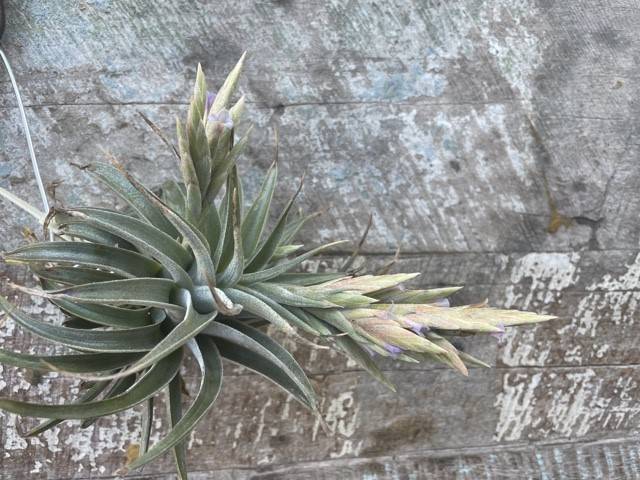

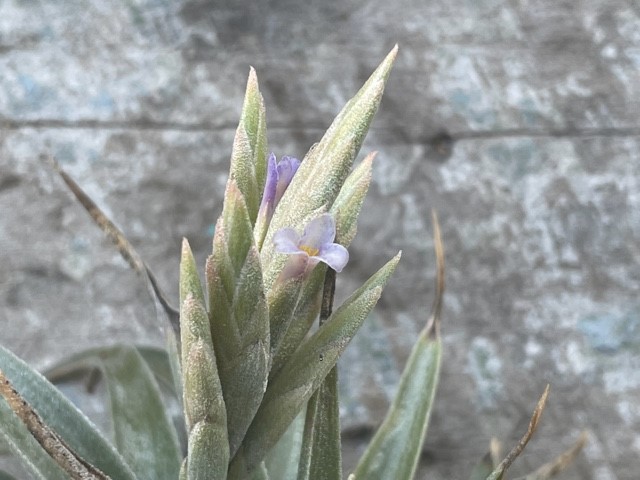
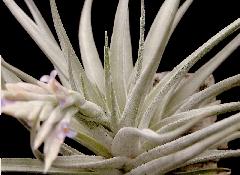
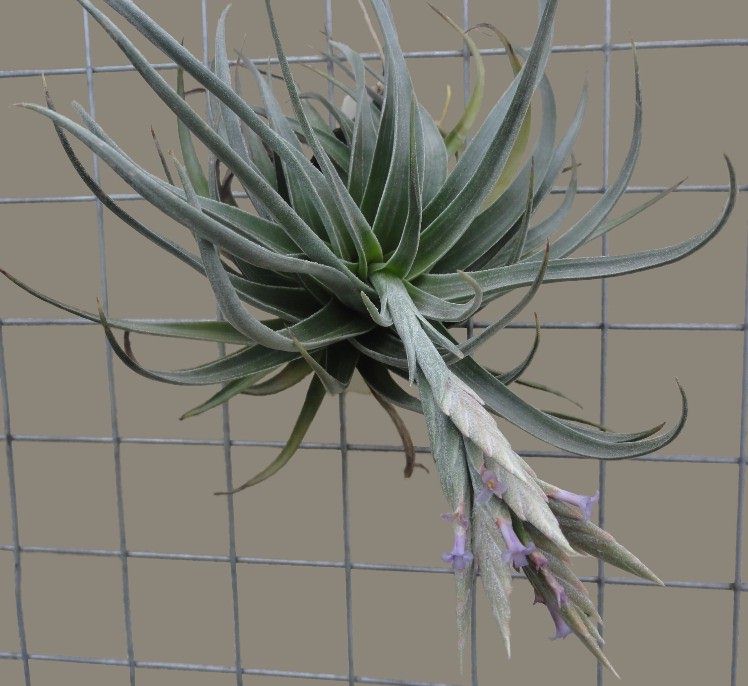
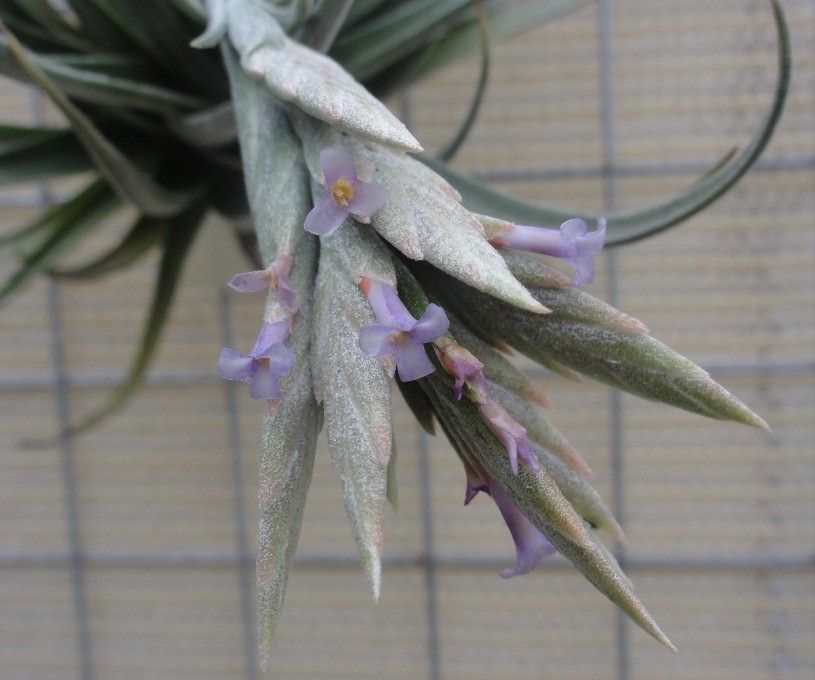
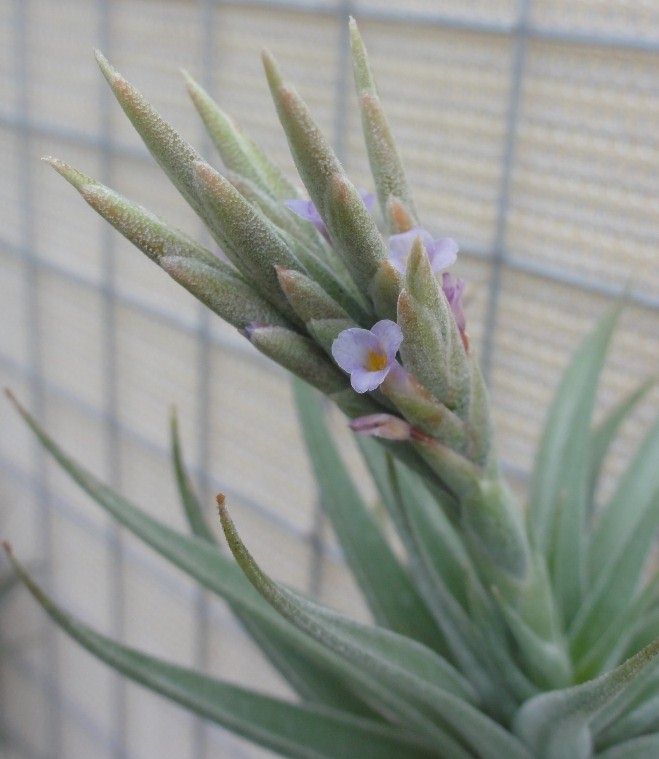





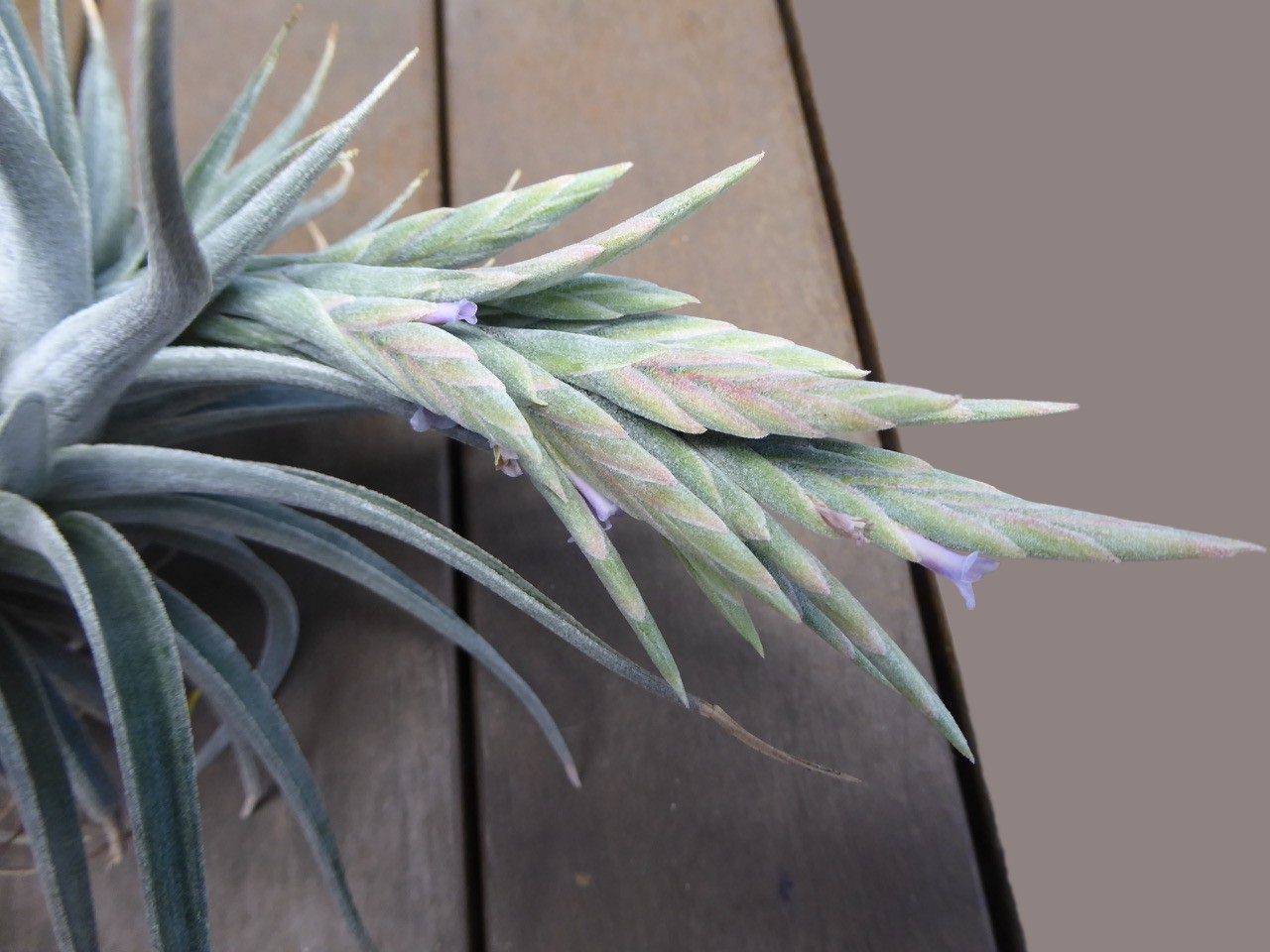
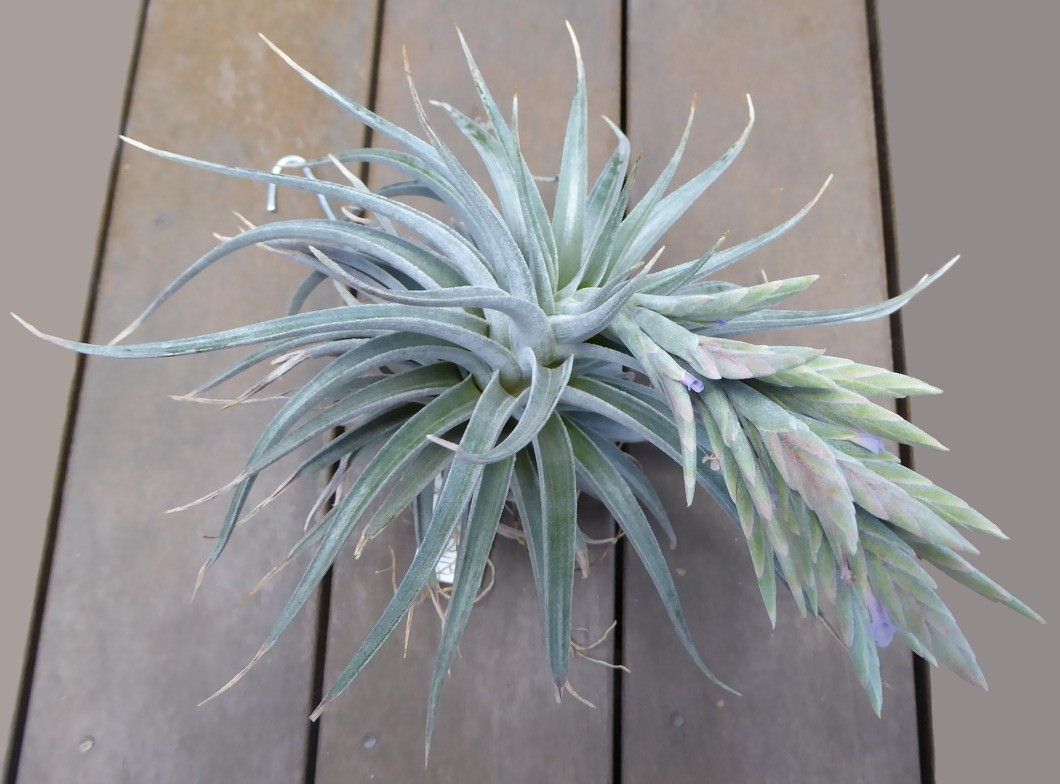
Plant stemless, flowering to 15 cm high;
Leaves many, densely covered with coarse cinerous scales;
Sheaths obscure, glabrous toward the extreme base, ca. 1.2 cm wide;
Blades narrowly triangular , attenuate, rigid, channeled, 5-12 cm long, 5-10 mm wide. Scape erect, 2-3 mm in diameter;
Scape bracts densely imbricate, foliaceous below becoming triangular above, densely cinerous lepidote;
Primary bracts like the upper scape bracts, exposing nearly all of each branch;
Inflorescence densely digitate with 5-7 lateral branches (rarely with 1 lateral branch);
Spikes erect to slightly spreading, narrowly lanceolate, 2-3.5 cm long, 3-7 flowered with 1-3 sterile bracts at the base;
Floral bracts imbricate and concealing the rhachis when living, slightly spreading when dried, elliptic, acute, 14-16 mm long, exceeding the sepals, somewhat carinate apically, densely adpressed lepidote, green or pale rose when living, but the color mostly obscured by the trichomes;
Sepals elliptic, acuminate, 11-12 mm long, posteriorly carinate and ca. 1/3rd connate, thin, lepidote along the mid-vein;
Petals 15-18 mm long, blades spreading, lavender-blue;
Stamens and pistil included; filaments plicate toward the apex;
Capsules to 28 mm long.
TYPE: Bolivia: Dpto. Santa Cruz: Prov. Caballero: vic. of Comarapa, 1850 m alt. Dry thorn scrub. 18 Jan. 1983, L. Besse, C. & J. Luer, R. Vasquez 1713 (Holotype: SEL).
Additional material examined: living plants from the type collection flowered in cultivation under SEL accession #83-21, July 1983, photo.
Tillandsia comarapaensis Luther sp. nov. is similar to T. didisticha (E. Morr.) Baker and at first was thought to be a depauperate form, but the shorter, digitate, bipinnate inflorescence, slightly longer floral bracts and lavender blue (not white) petal blades serve to distinguish it.
This new species superficially resembles a small form of T. latifolia Meyen of subgenus Allardtia, but the plicate filaments confirm its placement in subg. Anoplophytum.
The heavy fruit set of the type strongly supports the status of this taxon as a fertile, outcrossing species and not a chance hybrid of Tillandsia didisticha and a blue- or violet-flowered species. The living plants from the type collection have not set seed under controlled greenhouse conditions.
Tillandsia comarapaensis presents no special difficulties in cultivation if given a bright, airy position with controlled watering. Conditions suiting T. tenuifolia, T. streptocarpa and T. vernicosa would suffice.